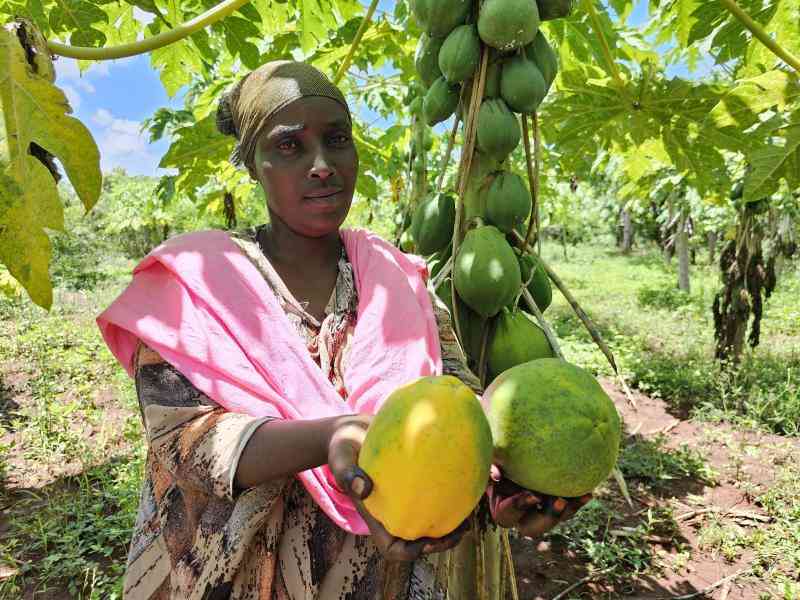After maize disappointed her, one farmer started scouting for an alternative crop.
“I asked around, did my research and was told sorghum has better returns. I immediately uprooted the maize and started growing sorghum,” Rhoda Ngeny, from Barongo-Kabisaga village, Nandi County shares her journey with Smart Harvest.
“Maize had been a real disappointment from the maize lethal necrosis disease to the poor markets. I could not pay my children’s fees nor feed my family using proceeds from maize,” the mother of three recalls.
With sorghum, which she has planted for three years now, the farmer says she does not have to contend with many crop diseases and has a reliable market.
“I sell some of the cereal to schools in the area and the local market which is guaranteed,” she says.
Ngeny reveals that she has made more from her sorghum farm in a year than what she has made with her maize farming which she practised for years.
“From the farm produce, last year, I harvested 15 bags which I sold at sold at Sh 4,000 per bag. Sometimes I feel that I cannot meet the market demand,” Ngeny says.
She says the most frustrating thing with maize was that she only had a sustained market in December but with sorghum, it is different.
For farmers who are thinking of embracing this crop, she shares her gems.
“For sorghum, it is all about its colour and taste, there are those which are white and other brown in variety,” says Ngeny.
Most farmers in Kenya grow two varieties of sorghum — Dobbs and Serena.
For Dobbs, its seeds are brown and mature in a span of four months, while Serena that originates from Swaziland takes three months.
She says the produce is harvested when its grains turn colour and it is either plucked or chopped on the apex before it is dried.
She says a farmer can harvest the grains thrice from its maiden crop unlike maize.
For quality yield, Ngeny says she gets certified seeds from Kenya Seed Company in Kitale.
Stay informed. Subscribe to our newsletter
What she loves most about sorghum is, “Its yields are encouraging and it can thrive in dry areas as well as on infertile soils.”
Ngeny says the crop stalks can also be used as fodder for livestock.
“Even when it has wilted, it can still be crushed and mixed with molasses for silage and if given to animals it boosts milk production,” she says.
Danick Ng’ang’a a crop specialist from Turbo says unlike maize, with sorghum, there are no post-harvest challenges due to its size and resistance to weevils during storage.
“For those who want to plant sorghum big time, they need to to attend agricultural fairs so that they can interact with experts who will guide them on appropriate farming techniques,” Ng’ang’a says.
 The Standard Group Plc is a
multi-media organization with investments in media platforms spanning newspaper
print operations, television, radio broadcasting, digital and online services. The
Standard Group is recognized as a leading multi-media house in Kenya with a key
influence in matters of national and international interest.
The Standard Group Plc is a
multi-media organization with investments in media platforms spanning newspaper
print operations, television, radio broadcasting, digital and online services. The
Standard Group is recognized as a leading multi-media house in Kenya with a key
influence in matters of national and international interest.
 The Standard Group Plc is a
multi-media organization with investments in media platforms spanning newspaper
print operations, television, radio broadcasting, digital and online services. The
Standard Group is recognized as a leading multi-media house in Kenya with a key
influence in matters of national and international interest.
The Standard Group Plc is a
multi-media organization with investments in media platforms spanning newspaper
print operations, television, radio broadcasting, digital and online services. The
Standard Group is recognized as a leading multi-media house in Kenya with a key
influence in matters of national and international interest.






